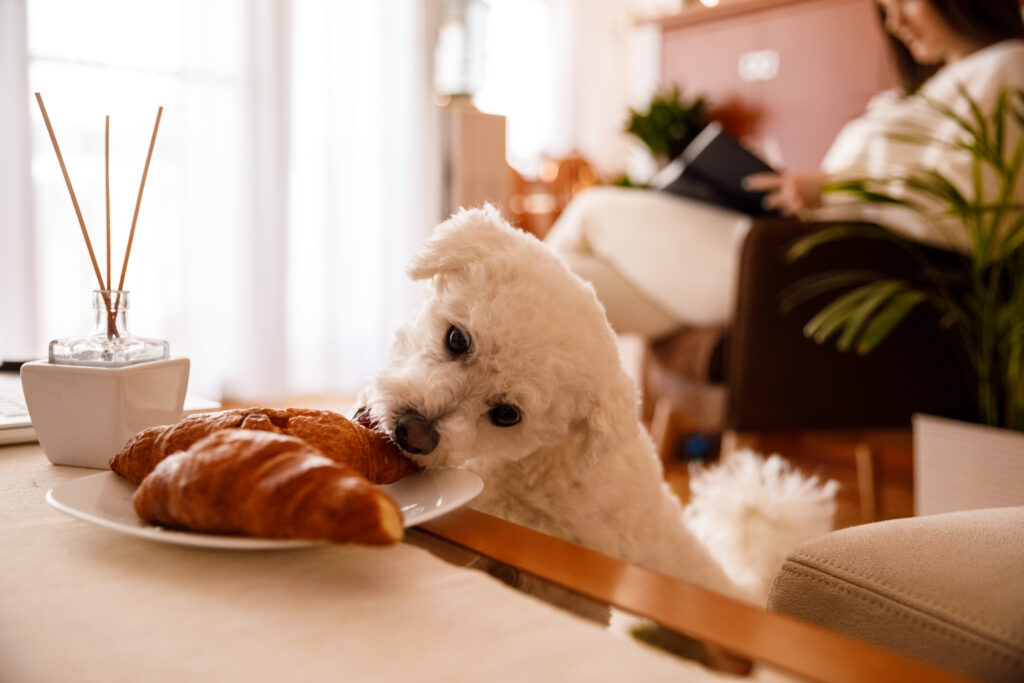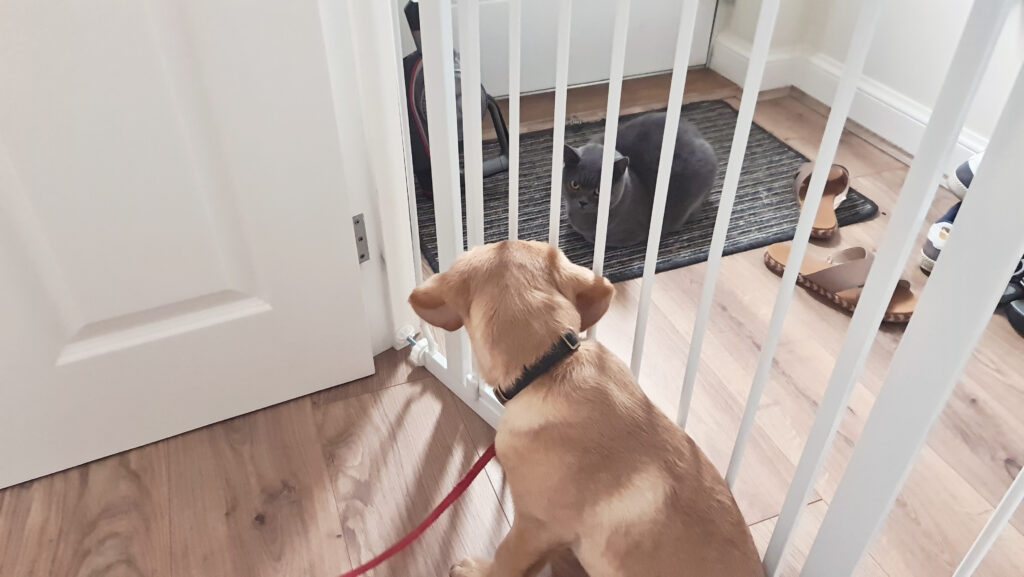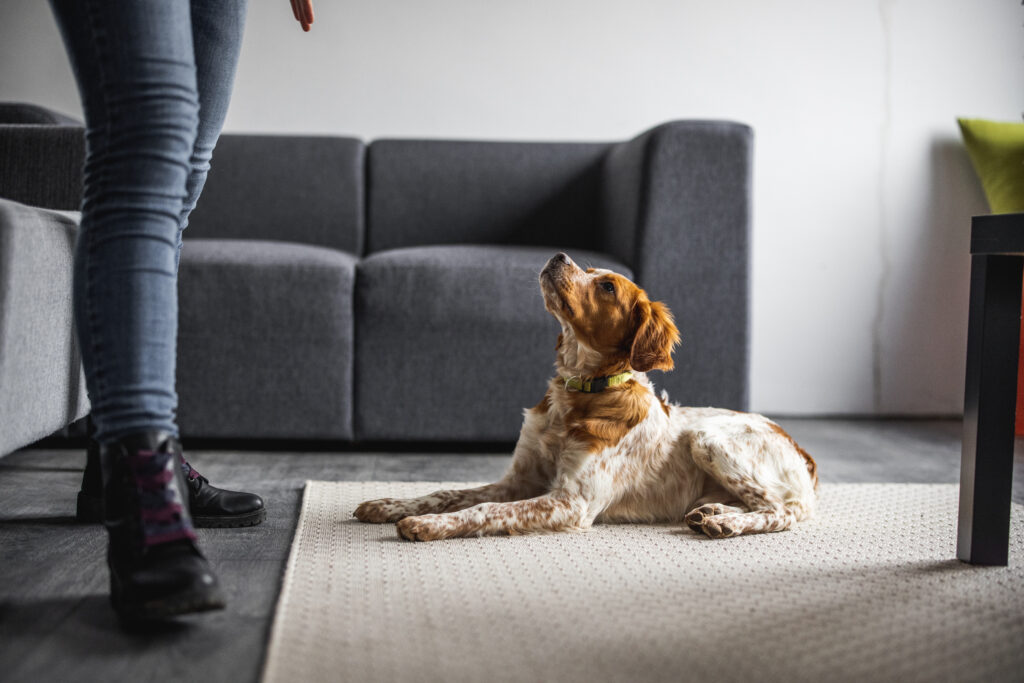
By Kristen DeLima
February 25, 2025
Category: Obedience Training | Reading Time: 5 minutes
When it comes to dog training, we commonly focus on teaching cues like “sit,” “stay,” and “leave it.” While training is essential, there’s another key factor in shaping your dog’s behavior—management. Proper management sets your dog up for success, prevents unwanted behaviors, and makes training more effective.
In this guide, we’ll explore what management means in dog training, the behaviors it can help with, and practical strategies you can use right away.
Management refers to controlling your dog’s environment and daily routine to prevent bad habits from forming and to make good behavior easier. Unlike training, which teaches a dog what to do, management reduces opportunities for problem behaviors in the first place.
For example, if your dog loves to jump on guests, a management strategy could be using a baby gate to prevent access to the front door while you train an alternative behavior, like sitting calmly when visitors arrive.
Management can be a lifesaver for a variety of common behavior challenges, including:
Management doesn’t fix behavior, but it prevents rehearsing bad habits while you work on training solutions.

This involves controlling your dog’s physical surroundings to reduce unwanted behaviors. Some key tools include:
✔️ Baby Gates, Playpens & Crates – Create safe boundaries to prevent access to certain areas and provide a structured space when you can’t supervise.
✔️ Leashes & Tethers – Keep your dog close and under control, even indoors.
✔️ Window Film & Curtains – Reduce barking by blocking outside triggers.
✔️ Managing Interactions with Pets & Young Children – Use barriers or supervision to ensure safe and positive experiences.
Being proactive can stop bad habits before they start. This includes:
✔️ Leashing your dog indoors when guests arrive to prevent jumping.
✔️ Managing greetings by asking visitors to ignore your dog until calm.
✔️ Removing tempting items so your dog doesn’t practice stealing food or objects.
A predictable daily schedule can reduce anxiety and frustration for your dog. Examples include:
✔️ Regular potty breaks to prevent accidents.
✔️ Scheduled meals instead of free-feeding.
✔️ Daily physical exercise & mental enrichment to reduce boredom-driven behaviors.
✔️ Harnesses – Ideal for leash training and managing reactivity by providing better control without pressure on the neck.
✔️ Long Lines – Useful for recall training, allowing freedom while preventing running off or keeping the dog within a safe proximity.
✔️ Muzzles – A valuable management tool for dogs exhibiting aggression, providing safety during training and behavior modification.
✔️ Treat pouches – Keep rewards easily accessible for reinforcing good behavior.

While management helps reduce unwanted behaviors, it doesn’t teach your dog what to do instead. It’s most effective when paired with positive reinforcement training to build long-term habits.
For example:
Management – Use a baby gate to stop your dog from dashing out the door.
Vs.
Training – Teach your dog to sit and wait at doorways before going outside.
An indoor tether is a short, secure leash that attaches to a stable object, helping manage your dog’s behavior effectively. It’s ideal for:
✔️ Calm Greetings – Prevents jumping on guests while teaching polite behavior.
✔️ Relaxation Training – Encourages settling instead of pacing or getting into trouble.
✔️ Preventing Counter-Surfing & Begging – Limits access to food areas.
✔️ Impulse Control – Reinforces staying in place with rewards.
A simple yet powerful tool to support good behavior!